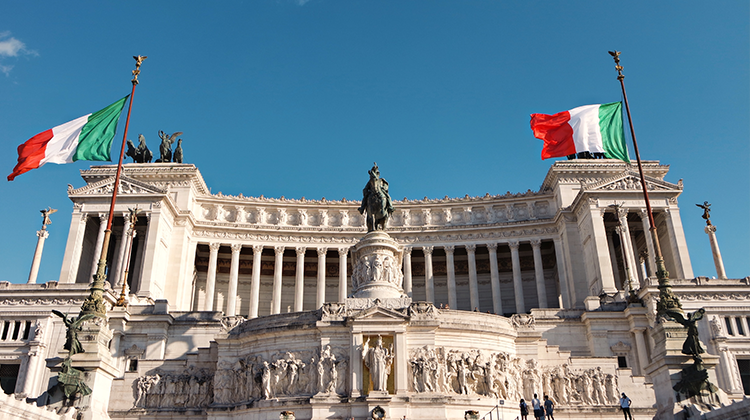Do you wish to discover some of the most fascinating places in Italy while reading from the comfort of your room? Are you planning on a journey to il Bel Paese and would you like to get a taste of what expects you before your departure? Book shops’ shelves are repleted with novels with an Italian setting, but I set up a reading list specifically tailored to lovers of the Italian language and culture. No matter whether you are about to take your flight to Italy, or you are thinking it over, the selection is aimed at cheering you up and bringing you joy with sparkles of the glamorous Italian lifestyle.
Being currently based in Tuscany, one of the most favorite destinations of students of Italian as a second language and travelers from all around the world, I cannot but start with Frances Mayes’ “Under the Tuscan Sun”, the first volume of the American author’s bestselling Tuscany memories series. In 1996 Mayes decided to relocate to Italy where she purchased an abandoned villa in the Tuscan countryside: the novel recounts the efforts in renovating the rural building. Most significantly, Mayes portray with generous enthusiasm the landscape, the local people, the ancient history of the area … and the food! In 2003 the book was adapted for the big screen by Audrey Wells starring Diane Lane as the main protagonist. Lane received a Golden Globe nomination for her performance.
A beautiful Italian villa is also the setting of another novel about the transformative power of travel. In 1921 Countess Elizabeth von Arnim (1866 – 1941), decided to spend a month in Italy at the Italian Castello of Portofino after the end of her umpteenth disastrous marriage. There the English novelist conceived the idea of her book “The Enchanted April”, a story about four unhappily married English women who answer an advertisement to rent an Italian chateau in San Salvatore, Italy, to get away from a dreary, soggy London. The advertisement seems to be a godsend to these women, whose lives are not going the way they had hoped. As the title word “enchanted” implies, the story does have a slight fairytale-like aura, although the women prove to be ill-matched very soon. Despite this, the characters fall under the spell of the Italian Riviera: who does not wish at least once in life to let the scale be removed from one’s eyes and let the course of true love unfold? For those who enjoy film adaptations, the novel was turned into a film in 1992 by Mike Newell. The film was shot at the Castello Brown in Portofino, where the author of the book stayed in the 1920s.
The pursuit of worldly pleasure accompanied by a deeper sense of life is also at the center of another acclaimed novel: “Eat, Pray, Love”, by the American author Elizabeth Gilbert. The book is a memoir chronicle of the author's trip around the world after her divorce and what she discovered during her travels. After a series of personal hardships, Italy represents the first part of Gilbert’s physical and spiritual journey to find peace and happiness across three countries. It is in Italy, indeed, that Gilbert embarks on an expedition for the sake of pleasure (eat), before moving further with her inner journey: a spiritual retreat at a temple in India (pray), and lastly a search for balance with the help of an elderly medicine man on a tourist island in Indonesia (love). “Eat, Pray, Love” was turned into a film in 2010 starring Julia Roberts in the role of Elizabeth Gilbert. Although the reactions from the critics were not always positive, the audience found the film version as inspirational as the book.
In case you feel like changing your arms in a more highbrow reading mixing history, fantasy, and fable, I can highly recommend Salman Rushdie’s “The Enchantress of Florence”. A mysterious blonde-haired traveler arrives in Sikri, the seat of the Mughal court, and asks for an audience with the ruler Jalalluddin Muhammed Akbar, known as Akbar the Great. The foreigner claims to come from an unknown, very remote city called Florence and to have a story as wonderful as it is true to tell: a story that links the destinies of the mysterious western capital from which he comes to those of the Indian monarch's descent. Combining fantastical elements with very meticulous documentation (Rushdie spent years researching this work), the novel winds its way through gigantic historical figures such as members of the Medici family and the Renaissance Italian diplomat, author, philosopher, and historian Machiavelli.
I will end my journey through comfort books about Italy with a literary classic, E.M. Forster’s (1879 –1970) “A Room with a View”. The book was conceived in 1901, when the English author, after graduating from Cambridge University (UK), spent his summer holidays with his mother in a Florentine pensione that used to host middle-class British tourists. The novel had a long gestation though, and it was not published until 1908. Lucy Honeychurch, the main protagonist, has a rigid, middle-class life education mapped out for her, until she visits Florence with her uptight cousin Charlotte, and finds her neatly ordered existence thrown off balance. As Forster put it in the narrator’s voice in Chapter 6, “Italians are born knowing the way. It would seem that the whole earth lay before them, not as a map, but as a chessboard, whereon they continually behold the changing pieces as well as the squares. Anyone can find places, but the finding of people is a gift from God.” Lucy’s eyes are opened by the unconventional characters she meets at the Pension Bertolini: flamboyant romantic novelist Eleanor Lavish, the Cockney Signora, curious Mr. Emerson, and, most of all, his passionate son George. Lucy finds herself torn between the intensity of life in Italy and the repressed morals of Edwardian England, personified in her terminally dull fiancé Cecil Vyse. Will she ever learn to follow her own heart? The award-winning film adaptation in 1985 was directed by James Ivory and starring Helena Bonham Carter as the protagonist, Lucy Honeychurch. The opening scene of the film was shot in a traditional pensione on the Arno, the Quisisana: the young Lucy and her cousin are watching an alley from the window, complaining precisely of the absence of a panorama worthy of the first visit to Florence. That alley, in 1993, was torn apart by a terrorist attack and consequently, was destroyed. Today, the Quisisana pension is called “Hotel Degli Orafi” and has a room that is called 'Room with a View'.
If you wish to know more about these books, and, most importantly, about the Italian language and culture, I encourage you to register for my course on Italki: “Italian to cheer you up: 5 comforting books about Italy that lift your mood and bring you joy.”







